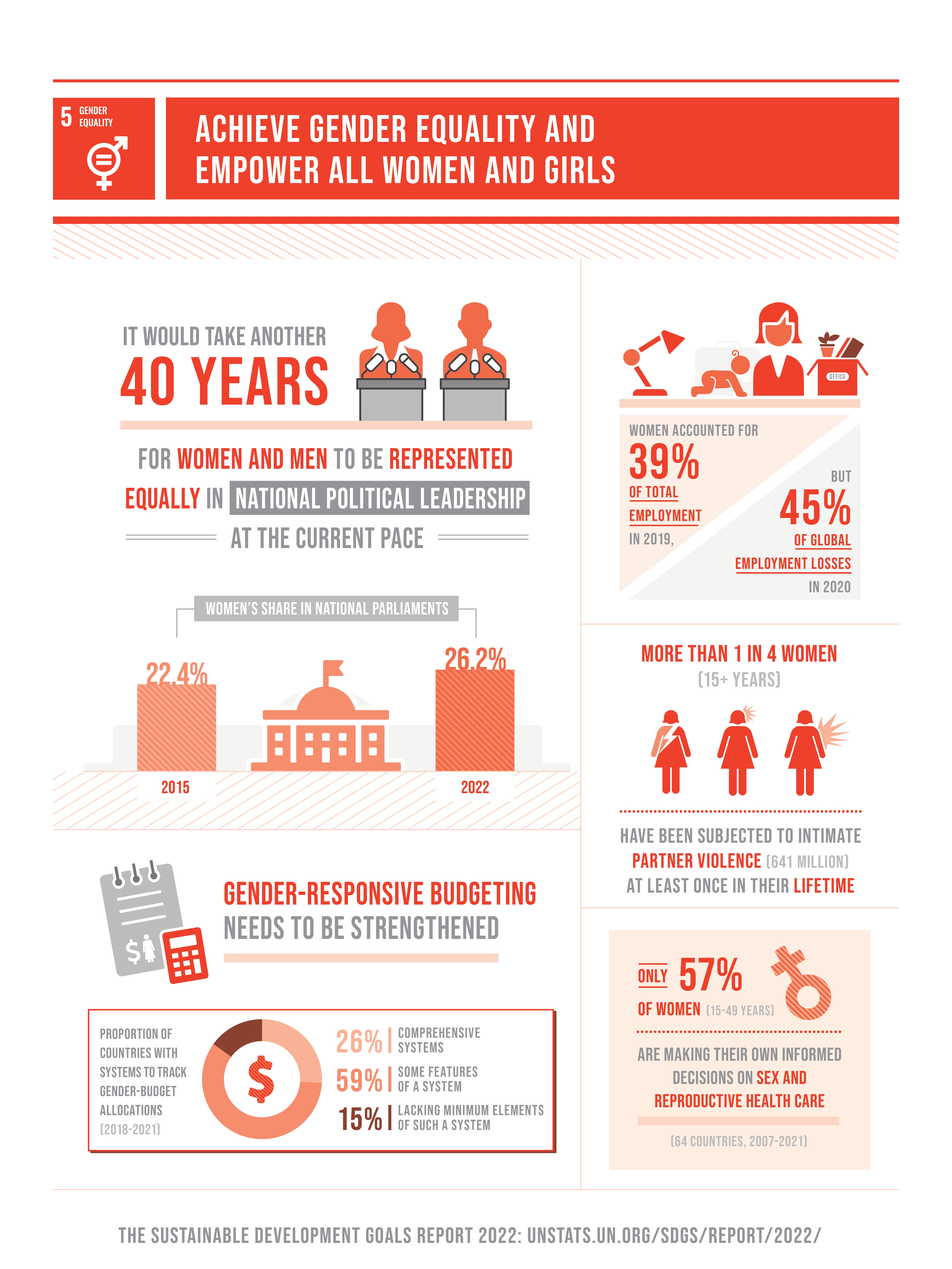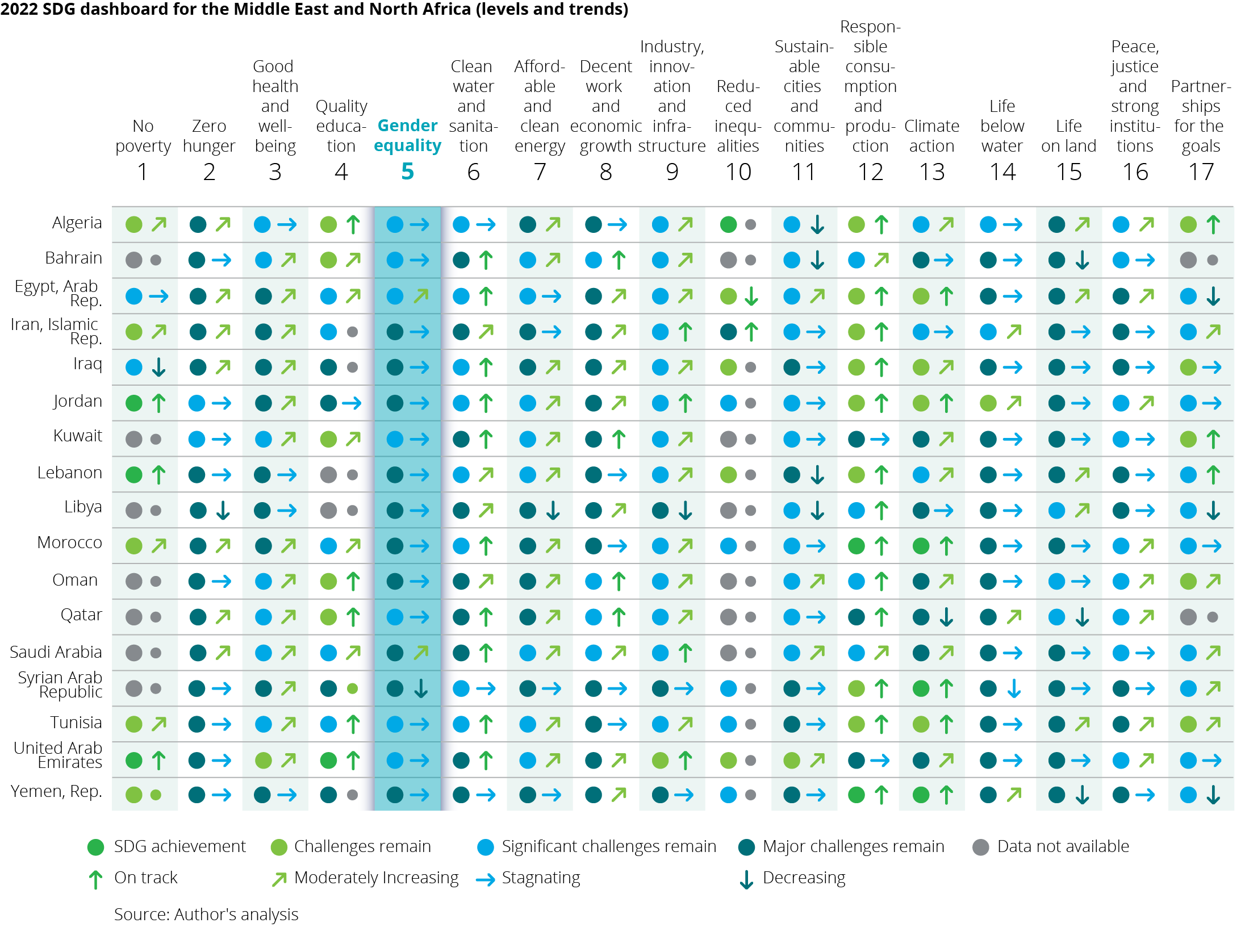Striving for a gender-balanced economy has been saved

Perspectives
Striving for a gender-balanced economy
What challenges does the Middle East need to consider in order to meet SDG 5 objectives?
The Sustainable Development Goals (SDGs), also referred to as the Global Goals, are a collection of 17 interlinked objectives designed to serve as a "shared blueprint for peace and prosperity for people and the planet now and into the future.”1 While all are important and require concerted efforts and focus with the impeding 2030 completion date, one SDG needs particular focus: the SDG 5 – Gender Equality. It is an SDG that has suffered and anecdotal evidence shows – has gone backwards (particularly post COVID-19) in terms of achievement. And while the Middle East has indeed made strides with the issue of gender equality, when compared to global markets, it still has a great deal to do What needs to be done to help drive this agenda forward? As we recently celebrated International Women’s Day on 8 March, we need to acknowledge the initial steps that have been taken in the Middle East in recent times. In the UAE, we have seen a minimal increase in the percentage of female board members with the number of women on listed UAE boards rising from 3.5% in 2020 to 8.9% in 2022. While not at the speed many pioneering entities and NGO’s have been looking for, several strides have also been taken to promote female participation in the workforce across the Middle East. This has coincided with a sharp increase of initial public offerings (IPOs) in the region and has changed governance requirements by the Central Bank of the UAE (CBUAE) through the Corporate Governance Regulations, which requires a minimum female representation of 20% on all boards. |
 |
 Are quotas the answer?
Are quotas the answer?
Many across the Middle East know the efforts to date, but at the current pace, these are never going to be sufficient to meet SDG 5. Various interventions have been tried and tested and solutions continue to be thought through. One such solution that has been widely discussed is the topic of quotas. Although there is no cure-all, with the population mix of around a 2:1 ratio of males to females in the overall Middle Eastern society, there are added challenges and cultural sensitivities that make the job the more difficult.
A good place to start is at the source, making a focused effort and creating mandates for gender split in relation to tertiary intake and recruitment activities. Incorporating equal male to female ratios in graduate intake processes or university applications is a key gateway to achieving an increased level of female participation in the workforce – but this must be combined with better gender ratios in the recruitment process. For those seeking to drive investment from western countries where the issue is at the front of most companies’ minds, this is voluntarily done, although in the GCC, the most effective way to make change is certainly through the regulatory environment.
In discussing this topic with a senior head of sustainability for a large financial institution, it was noted that quotas are good in giving both the private and public sectors “a kick in the right direction,” but if not aligned with other structures for change, the result could be governments and private businesses complying or ensuring the minimal requirements are met without necessarily bringing about the systemic and/or institutional change needed as a society and underpinning the purpose of SDG 5 and the SDGs as a whole. Much of what has been done through nationalization and the incorporation of In-Country Value (UAE) or In-Kingdom Total Value Add (KSA) requirements can potentially be leveraged to assist in this process.
Promoting flexibility and returning to work
One of the key challenges in the Middle East is the role women play in developing and nurturing their children. The introduction of an extended parental leave was recently initiated by companies to help support, attract, and retain female employees. There is also a more recent drive to change the traditional norms to which households operate. More and more men are happy and supportive of being the primary caregiver or to increase their duties at home. This change needs to be reinforced by government backed labor laws to allow men the option of being a primary caregiver and also to support women who choose to return to work sooner than historically and traditionally expected. This change should be promoted in order to aid in removing the gender stereotypes that so often plague our society.
Bringing men to the table to discuss diversity issues and challenges
In my opinion, an area that currently needs significantly greater focus in the Middle East is the topic of bringing men into the forum to discuss and become more aware and educated on the issues, challenges, and opportunities of increased gender diversity within an organization. Exposing them to the pain points, the challenges, and also let’s not forget the success stories, creates awareness on such issues. Too often, companies set up diversity committees and working groups which are mainly attended by females who are trying to force change. Having an inclusive, diverse dialogue and improving awareness amongst male leaders will only strengthen companies and bring about change that is meaningful within organizations. There is a great need to teach men about the negative impacts of unconscious bias and the positive impacts of a diversity of thought and opinion. This can only be accomplished if male leaders truly believe the statistics about how diverse workplaces bring about strong returns and a more sustainable entity, are open to be challenged and change, and are willing to listen and act.
There is no silver bullet
With only seven more years to achieve the SDGs, the Middle East and the world at large has a monumental task on its hands with respect to achieving gender equality and empowering women and girls in the workplace and society. There is no silver bullet solution that will address all the challenges we face, but I hope that a combination of regulation, amended societal norms and education, awareness, and openness to change will be the key pillars needed to meet this crucial target and unlock the power of diversified organizations.
By Daniel Gribbin, Director, ESG Risk Advisory, Deloitte Middle East

